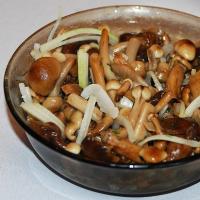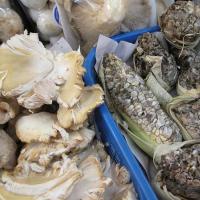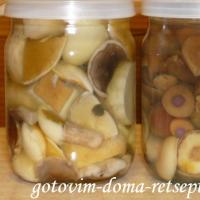Distribution and description of the fly agaric mushroom bright yellow
The bright yellow fly agaric (Amanita gemmata), otherwise called the straw yellow fly agaric, is harvested in Italy and southwest France as a completely edible, although not the most delicious mushroom. At the same time, in Germany it is reasonably considered deadly poisonous. Such sharp discrepancies indicate that the concentration of toxins in bright yellow mushrooms is highly dependent on the area in which the fruiting bodies of these mushrooms grow. In Russia, they are definitely classified as poisonous.
Representatives of the species have the following characteristic features:
- hemispherical convex cap opens with age to flat, diameter from 4 to 10 cm. The surface is dry, with a silky sheen, after rain becomes somewhat sticky. As a rule, white flakes of the bedspread are sometimes preserved on the mushroom cap;
- soft, loose, frequent plates are initially painted white;
- spores whitish;
- the stem of the mushroom is elongated, expanded towards the base, smooth, white or yellowish, up to 1.5 cm in diameter and up to 10 cm in height. In young specimens, remains of a light membranous ring are preserved, later disappearing almost completely. Around the swollen base, an adherent thin volva is noticeable;
- the pulp of the fruiting body is yellowish at the surface, whitening towards the core, the smell and taste are barely distinguishable.
Distribution and fruiting period
Fruit bodies grow in small groups on sandy poor soils in European and North American deciduous, mixed and coniferous forests. In the Russian middle zone, bright yellow fly agarics are not found everywhere, they gravitate towards the northern regions and bear fruit from mid-summer and autumn (until October).

Similar types and differences from them
Special vigilance is necessary for mushroom pickers when collecting edible champignons - large-spore (Agaricus macrosporus), field (Agaricus arvensis) and meadow (Agaricus campestris). In all young fruiting bodies, light plates have a slight yellowness or a barely noticeable pinkish tint. It is at this stage of development that they are often confused with the poisonous bright yellow fly agaric. As the plates ripen, all of the listed champignons darken, while the fly agaric retains its white color.
Hallucinogenicity
The bright yellow fly agaric contains the main psychoactive substances characteristic of the hallucinogenic fly agaric - ibotenic acid and muscimol, which are toxic in themselves.
Their action is complemented by poisonous muscarine and the overall picture of poisoning, which develops on average 3 hours after the use of this type of fly agaric, combines visual hallucinations, delusional visions, coordination disorders, nausea, vomiting, diarrhea, slowing and heart rhythm failures. Such phenomena can last 10-15 hours, and their consequences affect the state of health for a long time. In especially severe cases, convulsions develop, a coma occurs with a probability of death from respiratory and cardiac arrest.
Amanitas with bright yellow caps directly signal the dangerous substances that these mushrooms accumulate in their pulp. Their use leads to dangerous poisoning, combined with a distorted perception of reality and long-term complications.



